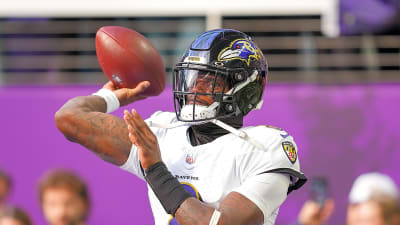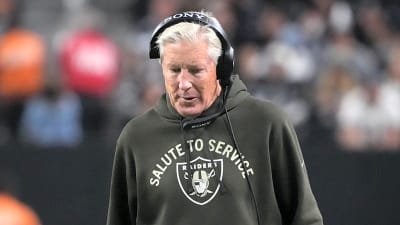
When the 2024-25 season came to an end, the Montreal Canadiens had several specific needs that needed to be addressed. Some are still on general manager (GM) Kent Hughes’ to-do list, like a top-six centre, but one thing he addressed was the addition of a right-handed top-pairing defender in Noah Dobson.
Before the Canadiens acquired Dobson, the New York Islander fan base was eager to trade him to fill other needs, and they were both insulting and praising him while doing so. Yet despite what some of those fans on social media were saying, they got themselves a solid top-nine forward and a role for their new top prospect to fill, and Montreal got itself a top-pairing defenceman. A real win-win type of trade where both sides got what they wanted.
At this moment in time, the Canadiens don’t have one of the best defensive corps in the NHL, as some thought they could; they may not even be top 10 overall. One thing for certain, they have one of the more quietly effective top pairings in the league with Dobson playing in tandem with Mike Matheson.
While the Canadiens are going through some issues during the recent five-game stretch, where they were only able to get a 1-3-1 record and gave up 20 goals (an average of four per game), the issues are not with their top pairing, and they can become a long-term solution for a team aiming to become a Stanley Cup contender.
Dobson Gives Canadiens a New Anchor
While debates on whether to retain Matheson are ongoing, and at this point, it looks as though the Canadiens are seriously leaning on retention, Dobson’s play with Matheson makes it possible for Hughes to use his defensive depth to make a trade to fill another need at centre. The issue is that, according to Marco D’Amico of RG.org, the trade market is being held up with his source stating that, “trading for a top nine centre right now is going to be very costly, with so few realistically available. The NHL’s parity in the standings makes it very difficult to add a player via trade without sacrificing from the current NHL roster.”
Head coach Martin St. Louis has the Canadiens playing with a strong forecheck, and his defencemen are aggressive, both pinching in at the offensive blue line and defending in the neutral zone. It makes it difficult for the opposition to even enter the offensive zone. Dobson fits in perfectly with that style of game. He has clearly become a star defenceman, and his 70-point season in 2023-24 points to him having the potential to become a superstar. He plays a cerebral game, able to read and anticipate plays. Some aspects of his game resemble a right-handed Andrei Markov.
Markov was quietly the embodiment of a top-tier, two-way puck-moving defenceman who can anchor a blue line. He excelled as a quiet, durable playmaker who averaged 47 points per season while playing 23 minutes per game. He was a foundational piece of the franchise, defining an entire era that was marred by some very poor team performances despite his efforts. Defensively, Markov provided a steady, reliable veteran presence throughout his career, often playing alongside younger, more physical partners and helping them flourish, such as P.K. Subban and Mike Komisarek.
Markov was a master of controlling the pace of the game with his high hockey IQ and pinpoint passing. His consistent presence provided a foundation, but his departure was handled poorly. Even though he said he felt disrespected by the team, he played 998 NHL regular-season games. But the Canadiens’ new management is looking to change that when they honour him on Dec. 3 with a ceremony at the Bell Centre.
In comparison, Dobson brings a more modern, explosive element to the Canadiens’ defence. Whereas Dobson is the high-impact catalyst accelerating the team’s current transition from a rebuilding phase to a competitive one. So far in his young career, he has averaged 52 points over the past four seasons, and this season he is on pace to meet that average. He can also provide an indirect, calming influence on the current young core of Hutson and Kaiden Guhle.
Dobson is a heavy minute-eater known for his composure and efficient breakouts, where he employs a more explosive, modern skating style and is more likely to challenge opponents with a shot from the point than Markov was, who used to slide down from the blue line on the weakside looking for a one-timer down low on a cross-ice pass from his forwards.
This pass by Noah Dobson on Cole Caufield’s first goal was Markovian
— /r/Habs (@HabsOnReddit) October 24, 2025
pic.twitter.com/0fkMKapfSF
Markov’s game was built on precision, structure, and an elite understanding of timing; traits that made him the quiet engine behind Montreal’s transition game for more than a decade. His partners consistently benefited from his stabilizing presence, allowing them to play more aggressively or confidently, knowing Markov could control the pace and recover play when needed.
Dobson, meanwhile, represents the modern evolution of the position: a high-tempo, offensively dynamic blueliner whose vision and puck distribution elevate not only his own play but the entire unit around him. His growth has turned his partners into more complete, effective players, enabling them to contribute in ways that weren’t as accessible before his breakout. Markov earned the nickname “the General” because he brought efficiency and consistency, while Dobson is more of a “Commander”, as he navigates the ice with his mobility, long-reach and high-volume shooting.
Canadiens Have a True Top Pair
The hope for any club is to be able to defend at a high level while also producing above average offensively. A pairing that can suppress shot attempts, zone entries, and move the puck up ice quickly. Montreal’s pairing of Dobson and Matheson looks like a boom-or-bust gamble. Neither was particularly known for their defensive game. They are known for their puck-moving abilities and elite skating. These skills have made them minute munchers.
Last season, Matheson averaged over 25 minutes of ice time, and Dobson averaged over 23 minutes; those are first-pairing worthy numbers. In Montreal, the need was to find a pair that St. Louis could rely on at five-on-five, and pairing these two just made sense considering just how young the Canadiens’ defence corps is. If size is an issue, and reading social media in Montreal, it always seems to be the case, Dobson is 6-foot-4 and 200 pounds, while Matheson is 6-foot-2 and 196 pounds, but no one should expect either to become bruising physical defenders like Jayden Struble or Arber Xhekaj. Their size just means they can handle the physicality teams will use to target them.
Matheson’s performance has raised a valid point: that he deserves a contract extension, not at any cost, but if he wished to remain with his hometown team on a five-year deal for under $6.5 million, he’d be exactly the kind of veteran Hughes would love to retain. So, it just makes sense to pair these two veterans together. While the Canadiens’ top pairing looks like a less-than-ideal pairing, the modern NHL values mobile defenders with a philosophy of “you can’t score 200 feet from our net”, something St. Louis admitted to before the season began.
“What can help you defensively is what you can do with the puck, because if you’re able to transition, make little plays to beat the pressure, you don’t have to defend. So, for one, that will help them defensively because they won’t have to defend as much. But together, Noah has a long reach, like a long stick, and Mike covers a lot of ice. Learning to play together will help them defensively.”
– Martin St. Louis (from ‘Why Canadiens are looking to Noah Dobson and Mike Matheson to form their top defence pair,’ The Athletic, Arpon Basu, 9/20/25)
But are they really a top pair? I’ve set up a comparison to other top pairs in the NHL, like Mathias Ekholm/Evan Bouchard (Edmonton Oilers), Moritz Seider/Simon Edvinsson (Detroit Red Wings) and what could be the league’s very best pair, Devon Toews/Cale Makar (Colorado Avalanche). The Dobson–Matheson pairing in 2025-26 by all metrics is a high-impact, two-way top pair with Dobson acting as the possession and offensive driver and Matheson used as the defensive stabilizer. Comparing them to those top NHL defence pairs, Montreal’s top pair doesn’t dominate in every defensive metric (especially in a shutdown assignment), but they do offer the balance a modern NHL pairing is expected to provide.
At five-on-five, Montreal’s pair have the best expected goals for per 60 minutes at 2.45, the second-best goals against per 60 at 2.47 (Detroit’s pair are tops at 1.99), and the third-best high danger chances for at 37. To put these in perspective, Montreal’s pair has had the lowest offensive zone faceoff starts and the second-most defensive zone starts. Adding more perspective is that, according to MoneyPuck, the Canadiens have some of the worst goaltending performances so far this season, and that accounts for most, if not all, of the statistical differences for the Canadiens’ top pair.
For Montreal, the pair’s elite skating gives mobility and recovery ability. By limiting offensive zone starts, St. Louis has eased the defensive burden on Matheson by providing him support from other players than just Dobson. While they may not be quite as dominantly possession-based as some of the pairs they’re compared to here, they compensate for that with a high floor defensively and very good two-way play. Also, their defensive reliability and skating make them a highly valuable top pair, especially in high-leverage minutes.
Dobson brought creativity and pressure-driving offence. His arrival in Montreal brings a positive influence offensively; his pairing with Matheson provides the franchise with a true top pairing that can define the rebuild era. While he is imperfect, he can become a superstar and a long-term solution to make the team a Stanley Cup contender.
More must-reads:
- Florida Panthers center Eetu Luostarinen suffers freak injury in 'barbecue accident'
- Adam Lowry's contract extension with Jets is another blow to 2026 NHL free agency
- The 'NHL all-time goal leaders' quiz
Breaking News
Trending News
Customize Your Newsletter
 +
+
Get the latest news and rumors, customized to your favorite sports and teams. Emailed daily. Always free!








